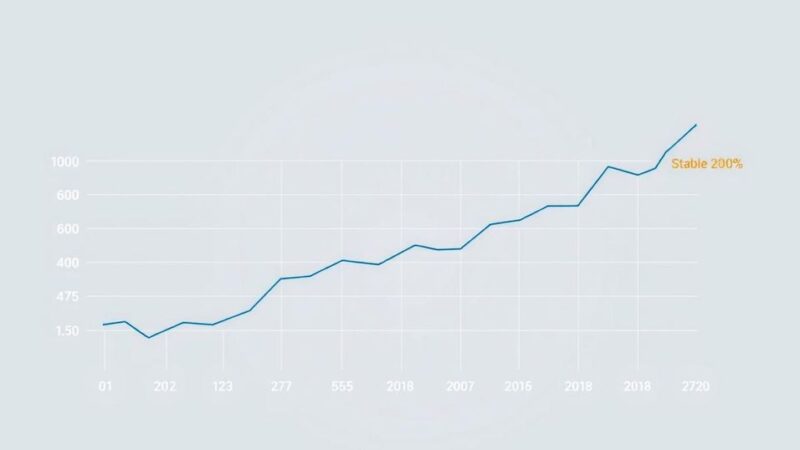- Cobalt prices saw a minor increase post-DRC export ban extension.
- Market participants predict improved liquidity may be dependent on Cobalt Holdings’ IPO.
- Inventory levels are expected to be critical come September.
- Chinese imports of cobalt hydroxide have shown a confusing trend.
- Alternative supplies, such as MHP, are becoming crucial for China’s market.
Cobalt prices aren’t reacting like they did in February.
Cobalt Metal Prices Show Different Trends Post-Ban After the Democratic Republic of Congo (DRC) announced an extension of its cobalt export ban on June 21, cobalt metal prices reacted quite differently than earlier this year. When the initial four-month ban was made public, cobalt prices surged significantly, but this time around there was a mere 0.2% price increase between June 23 and July 8. Last February, the same assessments indicated a staggering 43.2% jump between the end of February and early March. This stark contrast raises the question: what is behind this tepid market response?
Anticipated extensions lower urgency in market demand.
Market Sentiment and Seasonal Demand Affect Prices Industry insiders suggest that part of the reason for the muted price reaction could be attributed to market participants anticipating this extension, thus staving off panic. With summer being historically a quiet time for demand, consumers have reported ample stock levels as they gear up for routine maintenance closures. According to one trader, the impact of extended availability of hydroxide in the Chinese market is adding to the unhurried atmosphere: “Buyers in China don’t seem overly concerned about securing additional material right now.” Yet, the overall trade volume for cobalt metal appears to be less active than it was early in February, signaling a potential shift in trading dynamics amid ongoing DRC developments.
Effects of Cobalt Holdings’ decisions on market liquidity.
Cobalt Holdings’ IPO Delay May Impact Liquidity Interestingly, market participants noted that Cobalt Holdings opting not to proceed with its Initial Public Offering (IPO) in June might be contributing to the liquidity stagnation evident since the export ban extension. The firm had intentions of raising funds to acquire 6,000 tonnes of cobalt this year, followed by consistent purchases through 2031, a plan that could have injected some much-needed life into the market. Currently, reports indicate that Fastmarkets’ daily price assessment for standard grade cobalt slipped to $15.35-16.10 per lb, down from the previous range of $15.35-16.25. The cautious tone echoes throughout China’s battery production sector, where major players have been reliant on long-term contracts amid the seasonal lull as well.
September could reveal significant changes in the market.
Inventory Levels Signal Potential Market Tightness As the cobalt market awaits clarity on inventory levels, the focus has shifted to September as a pivotal time for cobalt hydroxide stores. Buyers in China operate at reduced capacity due to low down-demand, with one trader suggesting that the eventual tightening could lead to a flurry of activity in the market. “You’ve got to consider that a lot of deals are likely brewing behind the scenes, waiting to be finalized,” another trader added. Despite certain individuals expressing concerns about being unable to achieve minimal inventory levels by September, ongoing stock movements are presently keeping prices steady.
Import statistics create questions about supply amid bans.
Chinese Cobalt Hydroxide Imports Show Contrasting Figures Looking at import statistics, the data from China indicates a 7% decrease in cobalt hydroxide imports from January to May compared to last year, while seeing an impressive 78% growth from January to May this year. This discrepancy raises eyebrows as the DRC’s export suspension escalates questions around future supply levels. A DRC government advisor reiterated earlier assertions that a surge in imports is not intended to create a deficit situation in the market. Instead, maintaining healthy supply levels seems to be the primary focus for DRC authorities. The complicated dynamics here have made it clear that replacement units from other regions cannot match DRC’s contributions.
Production spikes raise concerns amid supply disturbances.
Production Levels Keep the Market Watchful Major production increases from CMOC Group have also altered the landscape, raising 2024 production estimates by over 100%. Yet, there is apprehension concerning forthcoming supply due to a force majeure notice issued by IXM, a trading arm of CMOC, which has further complicated matters. Similar concerns around Cobalt producers issuing similar notices earlier in the year hint at a potentially rocky road ahead. Investors and market participants remain vigilant as they contemplates how these challenges will manifest in future supply levels and cobalt pricing.
Shift to alternatives shows adaptation to market changes.
Alternatives Begin to Take Cobalt’s Place in Market With cobalt hydroxide prices soaring by 116% since the export ban, players in China are actively seeking alternatives, including recycled materials and mixed hydroxide precipitate (MHP). MHP has become a sought-after component for battery feed due to favorable compositions of cobalt, nickel, and sometimes lithium. The Chinese imports for MHP saw a 23% increase from last year’s figures, highlighting a shift in sourcing strategies. However, the current volumes from Indonesia cannot fully replace DRC cobalt, signaling ongoing challenges for suppliers and refiners as they navigate future market conditions.
June figures will be pivotal for future market trends.
Looking Ahead: Uncertainty Clouds Future Cobalt Market As cobalt prices and market movements continue to be shaped by the DRC’s extended export ban, all eyes are on China’s upcoming import figures for June. Analysts note that these numbers could heavily influence price movements and inventory levels going forward. Speculation around export quotas has been floated, though specifics remain unclear. For now, the market enters its anticipated quiet season, but analysts encourage keeping focused on evolving statistics, as this could spell significant adjustments in cobalt economics.
The cobalt market is currently in a period of uncertainty following the DRC’s export ban extension. While prices have not reacted as dramatically as earlier this year, key indicators suggest that the market may face tightness later in the year. Observations on inventory levels and import statistics will be crucial in understanding the subsequent market dynamics.






